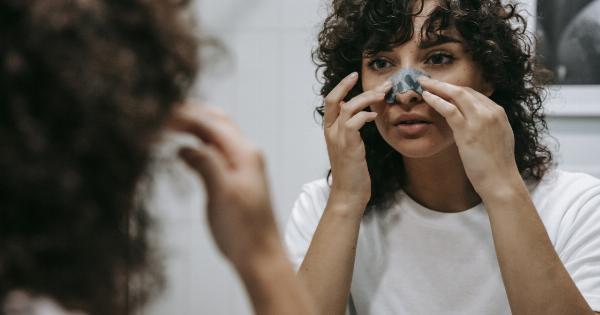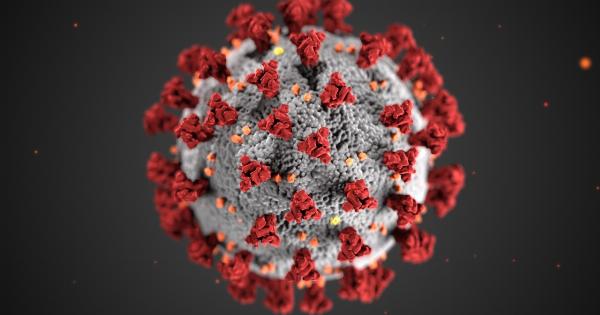Rhinoplasty, commonly known as a nose job, is a surgical procedure to reshape or reconstruct the nose. It is one of the most popular cosmetic surgeries worldwide, aimed at improving both the appearance and function of the nose.
While many individuals may undergo rhinoplasty once to achieve their desired results, there are some cases where multiple surgeries may be required. However, there is no definitive maximum limit on the number of rhinoplasty surgeries one can have.
Understanding Rhinoplasty
Rhinoplasty is performed by a plastic surgeon who specializes in facial procedures. There are two main types of rhinoplasty surgeries:.
1. Functional Rhinoplasty
Functional rhinoplasty is performed to correct structural abnormalities or breathing difficulties caused by issues such as a deviated septum or nasal valve collapse.
This type of rhinoplasty focuses on improving nasal function rather than cosmetic appearance.
2. Cosmetic Rhinoplasty
Cosmetic rhinoplasty is performed to enhance the aesthetic appearance of the nose. It involves reshaping the nasal bone, cartilage, and skin to improve proportion, symmetry, and overall nasal appearance.
It may involve procedures such as reducing or augmenting the size of the nose, refining the tip, straightening a crooked nose, or adjusting the bridge.
Revision Rhinoplasty
Revision rhinoplasty, also known as secondary rhinoplasty, refers to a subsequent surgery performed after one or more previous rhinoplasty procedures.
It is typically done to address unsatisfactory results, correct functional issues, or revise previous surgical complications.
When is Revision Rhinoplasty Necessary?
Revision rhinoplasty may be necessary in various scenarios:.
1. Suboptimal Aesthetic Outcome
Sometimes, the aesthetic result of a primary rhinoplasty may not meet the patient’s expectations. It could be due to asymmetry, sculpting irregularities, or dissatisfaction with the nasal shape or size.
In such cases, revision rhinoplasty can be performed to achieve the desired aesthetic outcome.
2. Functional Complications
In some cases, the primary rhinoplasty may lead to functional issues such as breathing difficulties, collapse of the nasal valve, or persistent nasal obstruction.
Revision rhinoplasty may be necessary to correct these functional complications and restore proper nasal function.
3. Structural Irregularities or Nasal Deformities
Occasionally, primary rhinoplasty may result in structural irregularities, such as a saddle nose deformity (collapse of the nasal bridge) or an over-resected nasal tip.
Revision rhinoplasty can correct these deformities and restore a more natural appearance.
Factors Influencing the Need for Revision Rhinoplasty
Several factors can contribute to the need for multiple rhinoplasty surgeries:.
1. Complexity of the Initial Rhinoplasty
The complexity of the primary rhinoplasty procedure plays a crucial role in determining the likelihood of needing a revision.
If the initial surgery was performed to correct severe deformities or address multiple issues, the chances of needing additional surgeries may be higher. Simpler rhinoplasties involving minor tweaks generally have a lower revision rate.
2. Healing and Scar Tissue Formation
Healing and scar tissue formation can vary from person to person. Some individuals may develop excessive scar tissue, which can distort the surgical outcome or cause breathing difficulties.
In such cases, revision rhinoplasty may be required to address the scar tissue and improve results.
3. Unrealistic Expectations
Unrealistic expectations can also contribute to the need for revision rhinoplasty.
If a patient’s desired outcome is not achievable due to anatomical limitations or previous surgical alterations, additional surgeries may be pursued to attempt to meet their expectations.
Timing of Revision Rhinoplasty
Revision rhinoplasty is typically not performed immediately after the primary rhinoplasty. Surgeons prefer waiting at least one year before considering revision surgery.
This waiting period allows the nose to heal, swelling to subside, and scar tissue to soften. It also helps the surgeon better assess the final results and plan the subsequent surgery more accurately.
Limitations and Risks of Multiple Rhinoplasty Surgeries
While there is no specific maximum limit to the number of rhinoplasty surgeries one can have, multiple surgeries can pose certain limitations and risks:.
1. Dwindling Tissue Supply
With each rhinoplasty procedure, there is a finite amount of nasal tissue available for manipulation. Over time, especially after multiple surgeries, the availability of viable tissue decreases.
The surgeon must work within the limitations of the remaining nasal tissue, making achieving desired results more intricate.
2. Scar Tissue Accumulation
Repeated surgeries can lead to the accumulation of scar tissue, potentially interfering with the surgical outcome and complicating subsequent surgeries. Scar tissue can make it harder to achieve significant refinements and may limit the final results.
3. Increasing Surgical Complexity
As the number of rhinoplasty surgeries increases, surgical complexity tends to rise.
Scar tissue, altered anatomy, and previous alterations pose challenges for the surgeon, making it more difficult to achieve optimal results with each subsequent surgery.
4. Higher Risk of Complications
Multiple surgeries can increase the risk of complications, such as infection, bleeding, poor wound healing, or anesthesia-related issues.
Each surgical intervention carries inherent risks, and the chances of complications may rise with each subsequent procedure.
Conclusion
While there is no strict maximum number of rhinoplasty surgeries a person can undergo, it is crucial to have realistic expectations and be aware of the limitations and potential risks associated with multiple surgeries.
A thorough consultation with a qualified and experienced plastic surgeon is essential to determine the best course of action based on individual needs and circumstances. Revision rhinoplasty should only be considered after primary rhinoplasty outcomes have fully stabilized, and the patient and surgeon are confident in pursuing further surgical intervention.






























